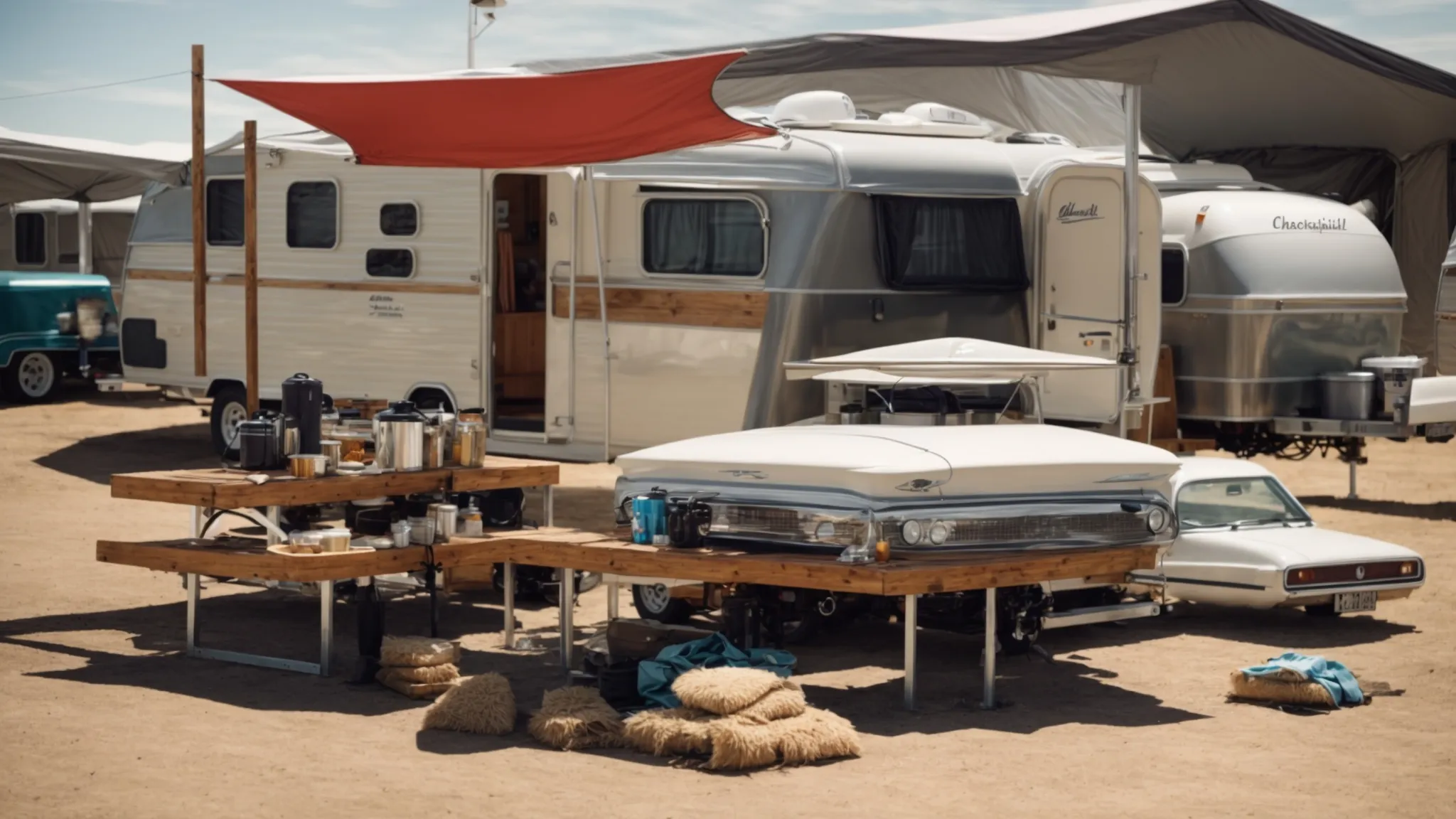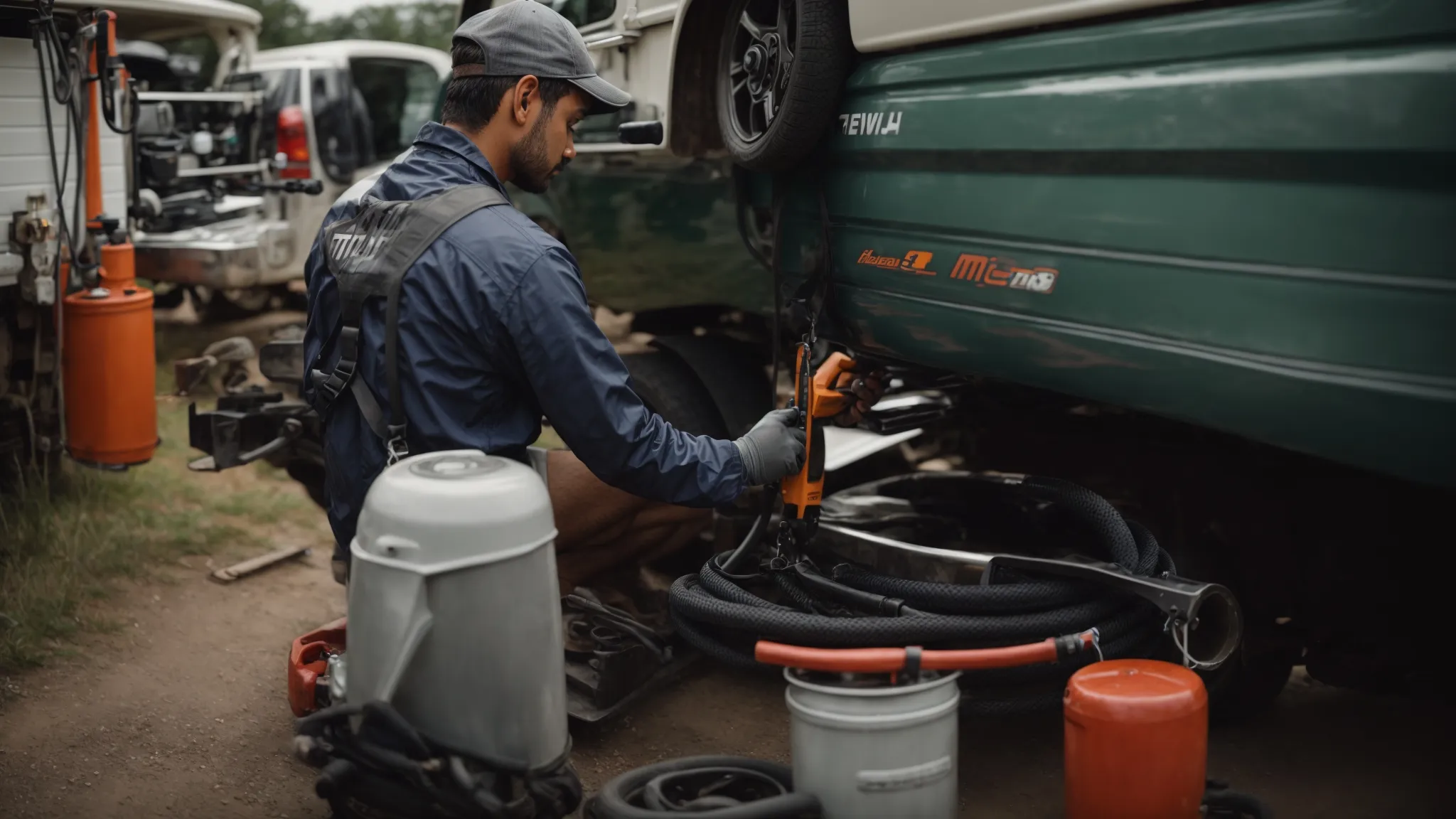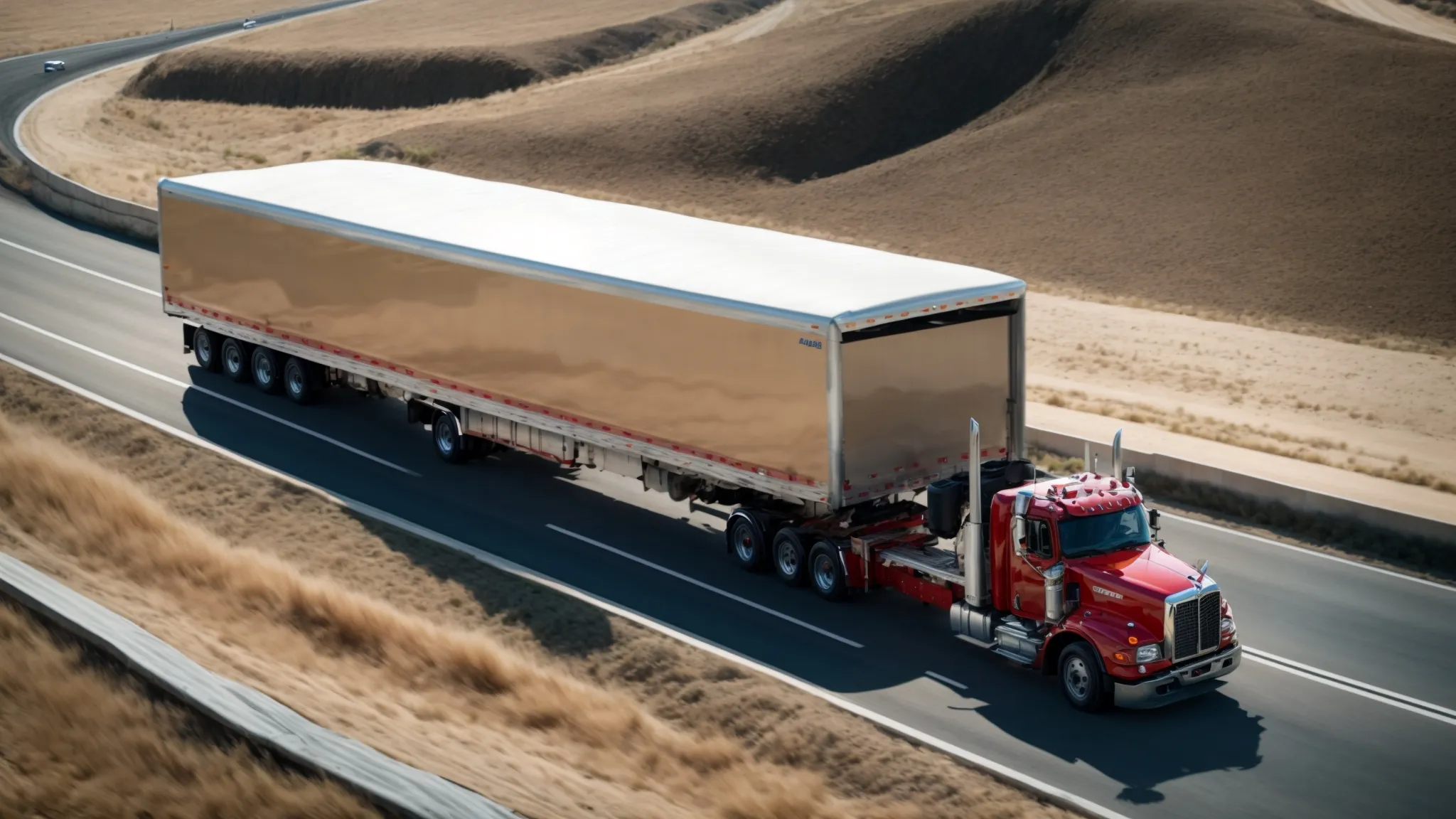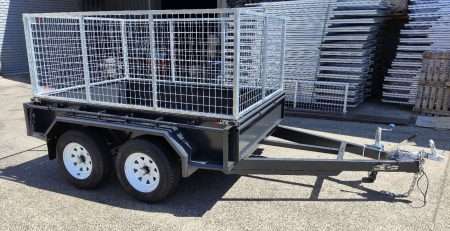
Conquer Tough Terrains with a Heavy-Duty 4WD Tow Hitch
Maximizing Tow Hitch Performance for Camper Trailers
Embarking on an adventure with your camper trailer hitched securely behind your 4×4 conjures images of open roads and landscapes tinged with the glow of sunset—a testament to freedom and exploration.
Yet, such idyllic visions rest upon the unassuming shoulders of one critical component: the tow hitch.
This unsung hero, whether it be an off road hitch designed for caravans or a sturdy 4wd tow hitch, bears the weight of your mobile haven, ensuring every journey’s safety and smoothness.
To maximize its performance, understanding the interplay between selecting the right type, conducting regular maintenance, and recognizing the value of upgrades is paramount.
As we tee off into the depths of maximizing tow hitch performance for camper trailers, keep your eyes peeled for golden nuggets of information that could very well turn your towing experience from good to great.
Key Takeaways
- Matching Your Camper’s Weight and Size With the Appropriate Tow Hitch Is Crucial for Safe and Seamless Travels.
- Regular Maintenance of Your Tow Hitch, Including Cleaning and Rust Prevention, Is Essential for Its Longevity and Reliability.
- Upgrading Your Tow Hitch With a Weight Distribution System and Sway Control Can Significantly Enhance Towing Stability and Safety.
- Correctly Attaching Safety Chains and Ensuring Functional Lights and Signals Are Vital for Communication and Safety on the Road.
- Accessorizing Your Tow Hitch Can Expand Its Functionality and Maximize the Utility of Your Towing Setup
Selecting the Right Tow Hitch for Your Camper Trailer

Navigating the sea of camper trailer hitches can feel akin to embarking on an odyssey, one where matching the might of your camper with the perfect companion – the tow hitch – is the ultimate quest.
Embarking on this journey requires a keen understanding of two fundamental aspects: the heft and dimensions of your camper and the vast landscape of hitch types available.
It’s akin to pairing a seasoned adventurer with the ideal gear; the harmony between your camper’s weight and size and the hitch’s capability defines the success of your travels.
This exploration into evaluating your camper’s specifications alongside deciphering the myriad of hitch types promises to steer you towards a seamless, hitch-perfect adventure.
Evaluate Your Camper’s Weight and Size
The first step on this journey, much like consulting a map before venturing into unknown lands, is understanding the scale at which we operate—the amassed weight and the sprawling dimensions of our camper trailer. For me, this process felt less like a routine check and more like a rite of passage, ensuring my travel companion, the camper, could harmoniously marry the strength of a suitable tow hitch.
I delved into this task with the meticulousness of a cartographer charting unexplored territories, recognizing that overlooking the mass or size could lead to selecting a tow hitch that simply can’t withstand the journey ahead. This wasn’t just about figures on a scale or numbers on a measuring tape; it was about laying the groundwork for adventures that memories are made of, ensuring safety and reliability were the co-pilots on every trip I envisioned.
Understanding Different Types of Hitches
Peering into the realm of tow hitches unveils a compendium as varied as the trails one might traverse with a camper trail hitched at the back. From robust off road caravan tow hitches designed to brave the untamed terrains, to more conventional 4×4 tow hitches that assure a smooth liaison with the road, the veritable assortment challenges one to make an informed choice. It’s akin to choosing a sword for battle; each hitch harbors its distinct might, suited for different dragons that roads can be.
In my quest, I stumbled upon the subtle intricacies that differentiate a standard caravan tow bar from the more advanced and rough-ready off road trailer hitch types. My enlightenment was akin to a revelation; understanding the nuances between a 4wd tow hitch and an off road hitch was pivotal. These weren’t just mere tools of connection; they were lifelines that could spell the difference between a journey remembered for its vistas and one recounted for its vicissitudes.
Now that you’ve harnessed the perfect hitch for your adventure chariot, let’s pivot to keeping it in prime condition. Fasten your seatbelts; we’re diving into the essential maintenance secrets that will keep your journey smooth and uninterrupted.
Essential Maintenance Tips for Tow Hitches

Embarking on the care of your tow hitch, once it’s diligently chosen and perfectly matched with your camper trailer, is not unlike tending to a trusted steed before a long journey.
The integrity of these metal marvels, key to the communion between your vehicle and trailer, can be preserved with two pivotal routines: regular cleaning and rust prevention, alongside the vigilant practice of checking and tightening bolts.
With my own hands, I’ve learned the significance of these maintenance rituals, ensuring the steadiness of my trailer, no matter the rugged terrains it may encounter or the many miles it traverses.
These are not mere suggestions but, rather, essential practices that stand as the bulwark against wear and tear, ensuring your adventures remain boundless.
Regular Cleaning and Rust Prevention
Embarking upon the diligent care of your tow hitch, particularly in the domain of regular cleaning and rust prevention, is akin to shielding your armor against the inevitable encounters with moisture and grime. I’ve come to realize that the relentless pursuit of cleanliness is not merely about aesthetics but a vital move to extend the life of this crucial linkage between my camper trailer and my vehicle.
In my journey, employing a regimen of rust prevention emerged as a beacon of wisdom, something akin to casting a protective spell over the metal. The application of quality anti-rust sprays and the commitment to a periodic yet thorough cleaning routine ensures that the tow hitch remains not just a functional piece of equipment but a resilient companion that stands steadfast against the ravages of time and use.
Checking and Tightening Bolts Periodically
Like the steady hand of a clock that ensures the passage of time, checking and tightening the bolts on your tow hitch periodically stands as a guardian of your journeys. This practice breathes life into the bond between your vehicle and camper trailer, ensuring that vibrations from untamed roads or the lull of highways don’t loosen this critical connection. It’s the silent vigil that maintains the symphony of safe travels.
Under the canopy of stars at a campsite or in the warmth of my garage, I make it my ritual to inspect the bolts that keep this alliance intact. It feels akin to whispering secrets to an old friend, where each turn of the wrench strengthens our bond, promising countless adventures free from the worry of an unexpected disconnection. This task, though seemingly small, is a cornerstone in preserving the integrity of our explorations together.
Mastering the art of maintenance paves the way for innovation. Let’s embark on the adventure of upgrading your tow hitch, unlocking a realm of enhanced performance.
Upgrading Your Tow Hitch for Enhanced Performance

Embarking on upgrading your tow hitch can metamorphose a standard towing experience into a saga of unparalleled stability and control.
It’s as if, by infusing your setup with a spine of steel, you empower your adventures with a resilience unseen in tales of old.
Investing in a weight distribution system isn’t merely an enhancement; it’s akin to laying the keystone in an ancient arch, balancing the might of your tow load across the steed that bears it.
Similarly, adding sway control is not just an addition—it’s instilling a sense of unwavering confidence, guaranteeing that your trailer moves as one with the vehicle, even when the winds of challenge howl and roads turn treacherous.
This pivot towards bolstering performance is the next chapter in our odyssey, ensuring that every journey is underscored by the symphony of stability and precision.
Investing in a Weight Distribution System
Steering into the sphere of enhancing tow hitch performance pivots prominently around the introduction of a weight distribution system. This shift, subtle yet profound, promises to redistribute the burden your steed carries, transforming a lopsided load into a harmonious equilibrium.
| Before Weight Distribution | After Weight Distribution |
|---|---|
| Uneven load distribution | Even load distribution across all axles |
| Increased strain on tow vehicle’s rear | Reduced strain, balanced towing setup |
| Potential for trailer sway | Minimized sway, enhanced stability |
This rebalancing act does more than just level the playing field; it imbues each journey with a semblance of grace under pressure. By equipping my setup with this technological ally, I’ve turned the odds in favor of not just safer, but smoother travels, where control and peace of mind reign supreme.
Adding Sway Control for Stability
Adding sway control to my tow hitch setup was a transformative decision, casting a veil of stability over my trailer’s journey. It was as though I had equipped my trailer with an invisible shield, warding off the gusts of wind and the unevenness of the road that used to instigate that heart-skipping sway.
| Before Sway Control | After Sway Control |
|---|---|
| Trailer sway susceptible to wind and uneven roads | Markedly reduced sway, steadier towing experience |
| Driver discomfort and safety concerns | Increased driving comfort, enhanced safety |
| Higher risk of trailer and vehicle damage | Lowered risk, safeguarding both trailer and vehicle integrity |
This addition rebalanced the dynamics of my trailer towing experience: the trek became smoother, the steering more responsive. That initial sense of trepidation when faced with crosswinds transformed into confident anticipation, knowing that the sway control was my steadfast ally against the capriciousness of the journey.
Embarking on this journey, we’ve equipped your vehicle with a titan of a tow hitch, setting the stage for adventure. Let’s pivot to the art of safe towing, ensuring your escapades remain thrilling yet secure.
Safe Towing Practices to Prevent Accidents

Transforming our travel tales into sagas of safety and expertise requires diligent adherence to secure towing practices, a chapter in our odyssey as crucial as any.
The act of correctly attaching safety chains becomes not just a guideline but a sacred ritual, ensuring that our journey’s vessel remains steadfastly anchored to our steed, even in the face of unforeseen trials.
Similarly, the vigilance in ensuring all lights and signals are functional ascends to an act of communication, a beacon that whispers our intentions to the souls we share the road with.
These practices are the unsung hymns of the road, melodies that safeguard our adventures and elevate our journeys from mere movement to a ballet of precision and precaution.
Correctly Attaching Safety Chains
Grasping the art of correctly attaching safety chains on my camper trailer tow hitch became a pivotal lesson, imbued with the gravity of a knight preparing his armor. It struck me that this wasn’t just a step in the process; it was the creation of a failsafe, a safeguard ensuring that even in the unforeseen event of a hitch failure, my precious cargo remained tethered to my steed, steadfast against the odds.
In my journey, I learned that threading the chains in a crisscross pattern below the hitch, ensuring they’re neither too slack nor too taut, was akin to weaving a safety net with my own hands. This practice, while seemingly simple, stood as a testament to my commitment to safety on the road, turning each journey into a harmonious symphony of preparedness and attentiveness.
Ensuring All Lights and Signals Are Functional
Ensuring that all lights and signals on my camper trailer are functional forms the cornerstone of a voyage steeped in safety. It is a commitment to clear communication on the roads: signaling my intentions to fellow travelers, thereby weaving a tapestry of understanding and mutual respect.
In the midst of preparing for departure, I always follow a ritual to affirm the alliance between my vehicle’s electrical system and the trailer’s lighting setup. This routine ensures that from the whisper of turn signals to the unequivocal declaration of brake lights, my trailer speaks the same language as my towing vehicle:
- Perform a comprehensive check of all lights and signals on the trailer and the vehicle to ensure compatibility and functionality.
- Engage the towing vehicle’s lights and walk around the trailer to confirm every light reflects the intended message: braking, turning, and presence.
- Consult a professional if discrepancies arise, prioritizing rectification to uphold the vows of road safety and compliance.
With safety in our rearview mirror, let’s accelerate into the world of customization. Imagine transforming your tow hitch into a Swiss Army knife for your road adventures.
Accessorizing Your Tow Hitch for Multi-Use Purposes

Accessorizing your tow hitch for a camper trailer extends its functionality far beyond the roads we trek; it’s akin to bestowing upon it the gift of versatility. This revelation struck me as I pondered over the ways to maximize the utility of my tow setup: a multipurpose command center rather than a single-function tool.
| Before Accessorizing | After Accessorizing |
|---|---|
| Limited to towing functions | Expanded capabilities for diverse uses |
| Underutilization of tow hitch potential | Maximized utility of investment |
| Constrained by conventional towing | Elevated experiences with versatile applications |
One profound transformation is the addition of a bike rack. Mounted directly onto the tow hitch, this accessory propels my travels into new realms, allowing me to bring along bicycles for exploring trails or cities near our camping sites. It’s a simple modification: turning the stern of my vehicle into a beacon of outdoor adventures.
Similarly, equipping a storage basket has dramatically altered my perception of space efficiency during travels. This addition, perched on the tow hitch, enhances the cargo capacity without encroaching on the interior space of my vehicle or trailer. Whether for extra camping gear or souvenirs from our escapades, this basket has proven indispensable.
Lastly, the introduction of a portable grill mount has elevated our outdoor dining experiences. By attaching it to the tow hitch, I’ve unlocked the potential for succulent barbecues at any stop. This shift, though minor, has enriched our camping lifestyle, blending gastronomy with adventure seamlessly.
Conclusion
Maximizing tow hitch performance for camper trailers is crucial for ensuring safe and enjoyable travel experiences.
Evaluating the camper’s weight and size is the first step in choosing the right hitch, akin to matching the journey’s demands with the appropriate gear.
Understanding different hitch types, from off-road to standard 4×4 options, enables a tailored approach, ensuring a smooth and secure connection between the vehicle and camper.
Regular maintenance, including cleaning and rust prevention, along with checking and tightening bolts, preserves the hitch’s integrity.
Upgrades such as weight distribution systems and sway control significantly enhance performance, ensuring even load distribution and stability, respectively.
Adhering to safe towing practices, like correctly attaching safety chains and ensuring functional lights and signals, prevents accidents.
Accessorizing the hitch expands its utility, adding versatility and maximizing investment.
Ultimately, prioritizing tow hitch performance not only safeguards the vehicle and trailer but also enriches the camping experience, turning each journey into a harmonious blend of adventure and safety.
Author

How to Mount a Spare Tire on Your Trailer: A Simple Step-by-Step Guide
Trailer service centers receive over 1 million phone calls and 1.3 million emails each year about trailer maintenance problems....

How to Fix RV Roof Leaks: Simple Roof Leak Detection Guide for Beginners
Did you know DIY RV roof repairs can cost under $50? But undetected leaks could lead to substantially higher repair...

Starting a Food Truck Business in Australia: From Trailer Selection to Launch
The Australian mobile food market has evolved into a billion-dollar industry. This makes a food truck...
